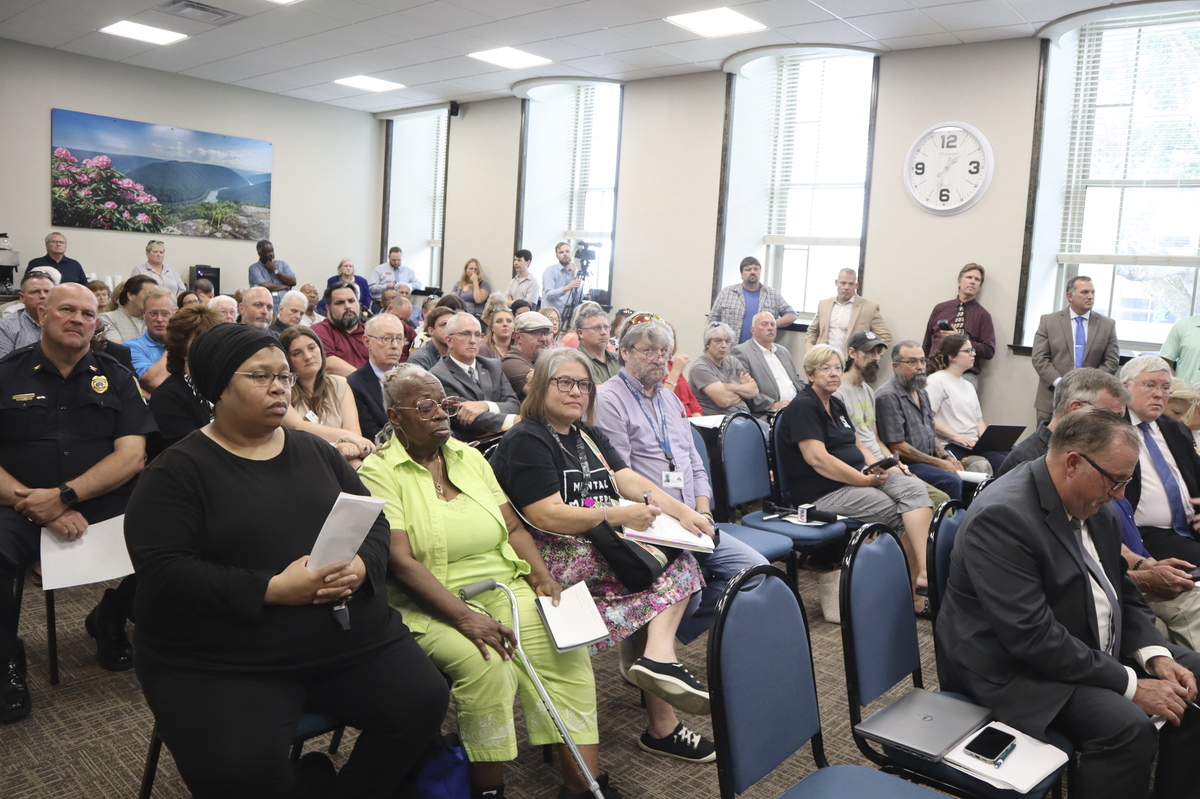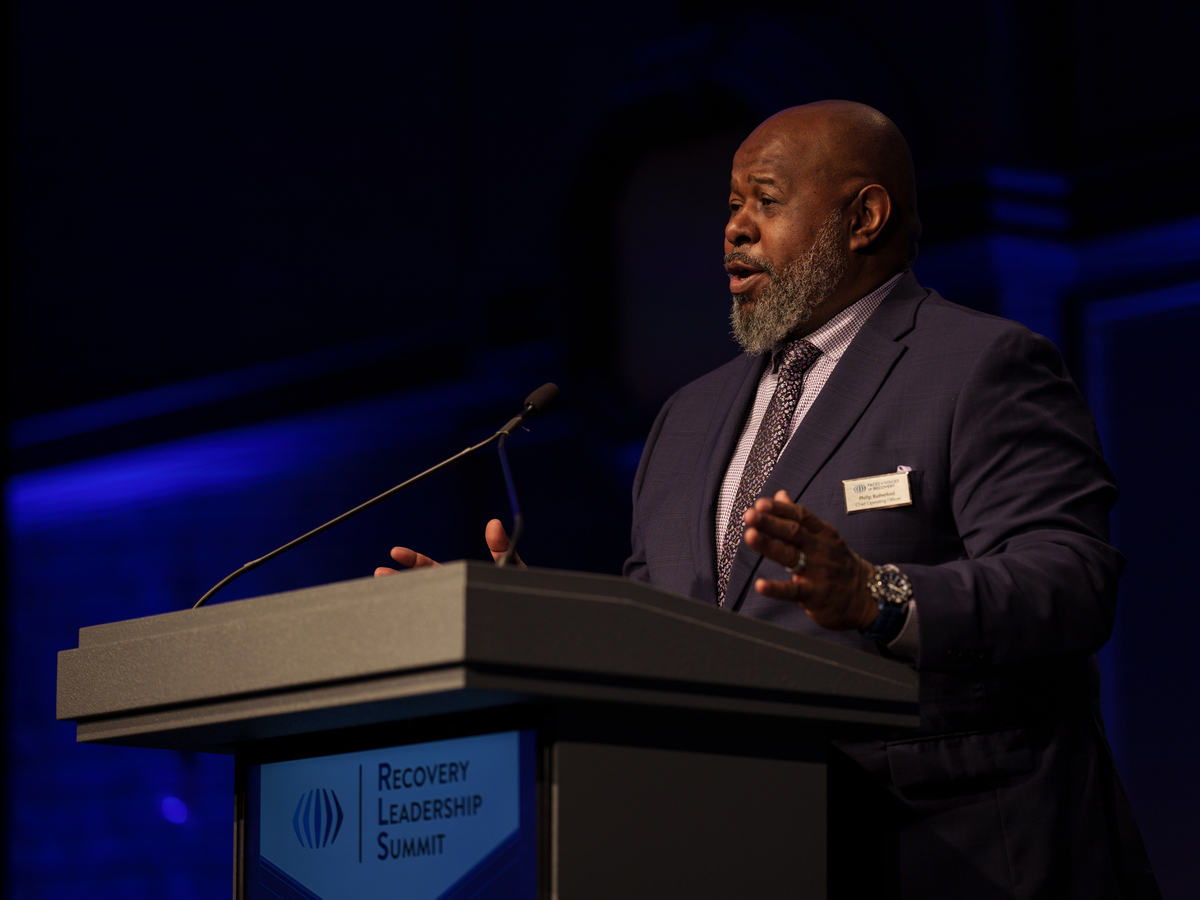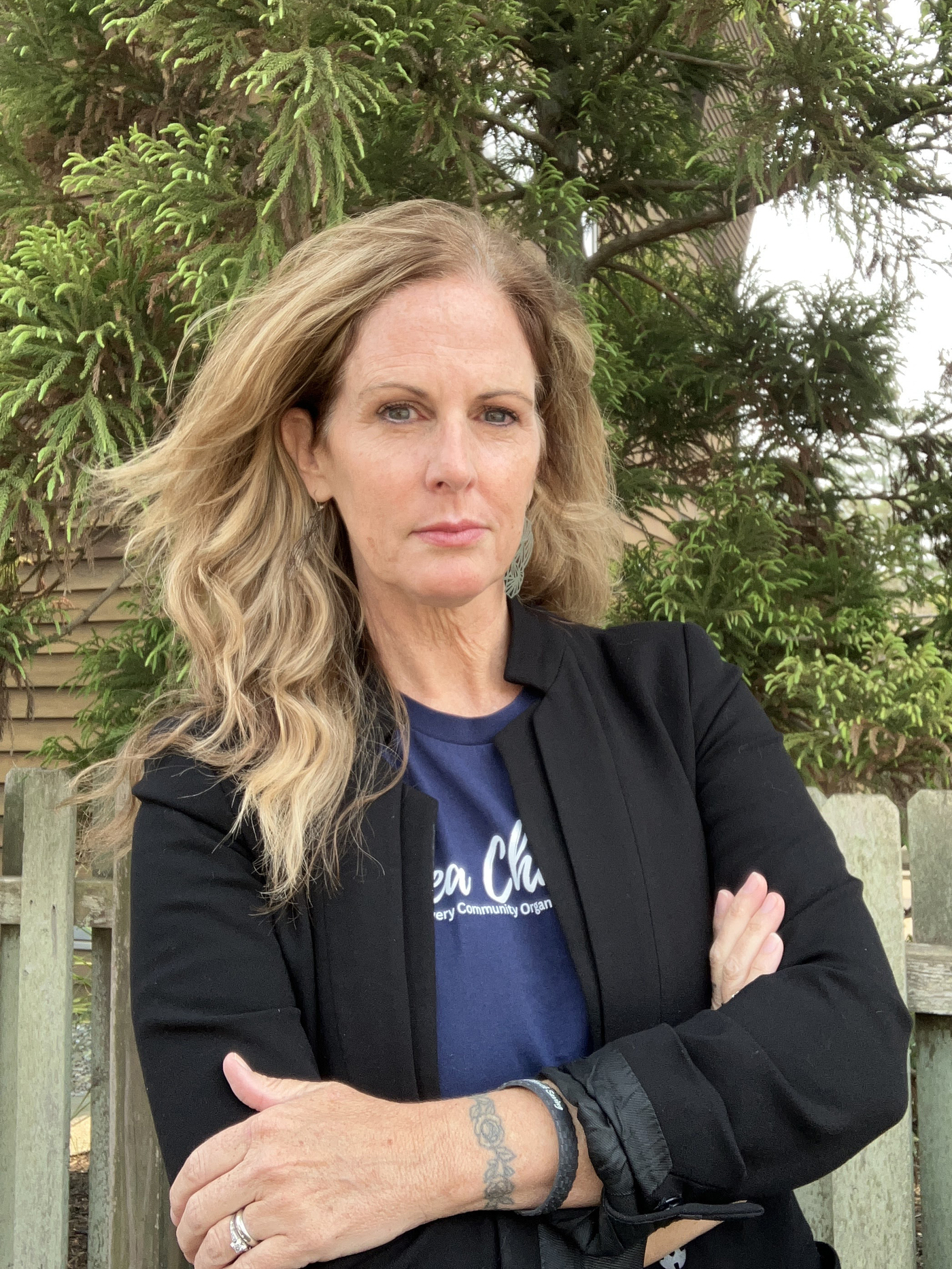
Native representatives collect in Beckley, W.Va., to pick out a regional consultant for the nonprofit council that will probably be answerable for distributing funds from the state’s opioid settlement. Across the nation, state councils like this can determine methods to spend $50 billion in opioid settlement funds.
Leah Willingham/AP
disguise caption
toggle caption
Leah Willingham/AP

Native representatives collect in Beckley, W.Va., to pick out a regional consultant for the nonprofit council that will probably be answerable for distributing funds from the state’s opioid settlement. Across the nation, state councils like this can determine methods to spend $50 billion in opioid settlement funds.
Leah Willingham/AP
As greater than $50 billion makes its option to state and native governments to compensate for the opioid epidemic, individuals with excessive hopes for the cash are already combating over a little-known bureaucratic arm of the method: state councils that wield immense energy over how the money is spent.
In 14 states, these councils have the last word say on use of the cash, which comes from corporations that made, distributed, or offered opioid painkillers, together with Purdue Pharma, Johnson & Johnson, and Walmart. In 24 different states, plus Washington, D.C., the councils set up finances priorities and make suggestions. These will have an effect on whether or not opioid settlement funds go, for instance, to enhance habit therapy applications and restoration homes or for extra narcotics detectives and prisons.
KFF Well being Information, together with Johns Hopkins College and Shatterproof, a nationwide nonprofit targeted on the habit disaster, gathered and analyzed information on council members in all states to create the primary database of its form.
When individuals know who sits on these councils, they will see who’s and isn’t represented and the way that impacts the best way cash is spent. The information exhibits that councils are as distinctive as states are from each other. They range in dimension, energy, and the quantity of funds they oversee. Members run the gamut from docs, researchers, and county well being administrators to regulation enforcement officers, city managers, and enterprise house owners, in addition to individuals in restoration and oldsters who’ve misplaced youngsters to habit.
“The overdose disaster is extremely complicated, and it calls for extra than simply cash,” mentioned Rollie Martinson, a coverage affiliate with the nonprofit Neighborhood Schooling Group, which is monitoring settlement spending throughout Appalachia. “We additionally want the appropriate individuals in control of that cash.”
That is the $50 billion query: Are the appropriate individuals steering the selections? Already, stakeholders are starting to level out considerations they’ve about their particular state councils. For instance:
- Council membership does not at all times align with the states’ hardest-hit populations — by race or geography.
- Heavy presence of particular skilled teams — therapy suppliers, well being care executives, or regulation enforcement officers, for instance — would possibly imply cash will get directed to these specific pursuits on the expense of others.
- Few seats are reserved for individuals who’ve handled a substance use dysfunction themselves or supported a member of the family with one.
Admittedly, nobody can design an ideal council. There is not any settlement on what that may even appear to be. However when a pile of cash this massive is at stake, everybody needs in on the motion.
Greater than $3 billion of opioid settlement funds has already landed in authorities coffers, with installments to return by way of 2038. The cash is supposed as restitution for hard-hit communities and the a whole lot of hundreds of Individuals who’ve died from drug overdoses in latest a long time.
Rigidity between hurt discount and regulation enforcement approaches
What restitution for the opioid disaster seems to be like will depend on whom you ask. Individuals working syringe service applications would possibly counsel spending cash instantly on the overdose reversal medicine naloxone, whereas hospital officers would possibly advocate for longer-term investments to extend staffing and therapy beds.
“Individuals naturally need cash to go towards their very own subject or curiosity,” mentioned Kristen Pendergrass, vp of state coverage at Shatterproof.

Courtney Gary-Allen, organizing director for the Maine Restoration Advocacy Challenge, has been advocating earlier than the state legislature for years for insurance policies to assist individuals with substance use problems. She is now a member of the state’s council that may direct greater than $65 million in opioid settlement funds.
Kelly Merrill
disguise caption
toggle caption
Kelly Merrill
And there is concern this may occasionally have an effect on decisions about how the funds are spent in lots of elements of the nation. As an illustration, individuals who help syringe service applications or related interventions fear that councils with excessive numbers of law enforcement officials and sheriffs will as a substitute direct giant parts of the cash to purchase squad automobiles and bulletproof vests. And vice versa.
In most states, although, regulation enforcement and felony justice officers make up fewer than one-fifth of council members. In Alaska and Pennsylvania, as an example, they are not represented in any respect.
Outliers exist, after all. Tennessee’s 15-member council has two sheriffs, one present and one former district lawyer normal, a felony court docket decide, and a particular agent from the state Bureau of Investigation. However like many different councils, it hasn’t awarded funds to particular teams but, so it is too quickly to inform how the council make-up will affect these choices.
Pendergrass and Johns Hopkins researcher Sara Whaley, who collectively compiled the record of council members, say there could possibly be actual sensible impression of councils drawing too closely from one subject, geographic space, or race.
“Having various illustration within the room goes to verify there’s a steadiness on how the funds are spent,” Pendergrass mentioned.
To this finish, Courtney Gary-Allen, organizing director for the Maine Restoration Advocacy Challenge, and her colleagues selected early on to make sure their state’s 15-member council included individuals who help what’s often known as hurt discount, a politically controversial technique that goals to attenuate the dangers of utilizing medicine. Finally, this push led to the appointment of six candidates, together with Gary-Allen, to the panel. Most have private expertise with habit.
“I really feel very strongly that if these six people weren’t on the council, hurt discount would not get a single greenback,” she mentioned.
A possible for geographic and racial divides
In different areas, some persons are beginning to concentrate on potential misplaced alternatives.
In New Jersey, Elizabeth Burke Beaty, who’s in restoration from substance use dysfunction, has seen that almost all members of her state’s council characterize city enclaves close to New York Metropolis and Philadelphia. She worries they’re going to direct cash to their dwelling bases and exclude rural counties, which have the very best charges of overdose deaths and distinctive boundaries to restoration, resembling an absence of docs to deal with habit and transportation to far-away clinics.
Natalie Hamilton, a spokesperson for New Jersey Gov. Phil Murphy, a Democrat who appointed the members, mentioned the council represents “a large geographic area,” together with seven of the state’s 21 counties.
However solely two of these represented — Burlington and Hunterdon counties — are thought of rural by the state’s Workplace of Rural Well being wants evaluation. The state’s hardest-hit rural counties lack a seat on the desk.

Philip Rutherford is the chief working officer of Faces & Voices of Restoration, a nonprofit that organizes individuals in restoration round habit points. He mentioned Black members of his group have been turned away from opioid settlement council conferences. “There’s this notion that this cash shouldn’t be for individuals who appear to be me,” he says.
Lindsay Dively
disguise caption
toggle caption
Lindsay Dively

Philip Rutherford is the chief working officer of Faces & Voices of Restoration, a nonprofit that organizes individuals in restoration round habit points. He mentioned Black members of his group have been turned away from opioid settlement council conferences. “There’s this notion that this cash shouldn’t be for individuals who appear to be me,” he says.
Lindsay Dively
Now that many of the council seats nationwide are crammed, worries about racial fairness are rising.
Louisiana, the place practically a 3rd of the inhabitants is Black, has no Black council members. In Ohio, the place Black residents are dying of overdoses on the highest charges, solely one of many 29 council members is Black.
“There’s this notion that this cash shouldn’t be for individuals who appear to be me,” mentioned Philip Rutherford, who’s chief working officer of Faces & Voices of Restoration and is Black. His group organizes individuals in restoration to advocate on habit points.
Analysis exhibits Black Individuals have the fastest-rising overdose loss of life charges and face essentially the most boundaries to gold-standard remedies.
A name for illustration from these personally affected
In a number of states, residents have lamented the shortage of council members with first-hand information of habit, who can direct settlement {dollars} primarily based on private experiences with the therapy and felony justice methods. As an alternative, councils are saturated with therapy suppliers and well being care organizations.

Elizabeth Burke Beaty is in long-term restoration from substance use dysfunction and runs Sea Change, a nonprofit restoration neighborhood group in New Jersey. She says individuals who have seen the pitfalls of the habit and felony justice methods know finest the place to direct opioid settlement {dollars}.
Elizabeth Burke Beaty
disguise caption
toggle caption
Elizabeth Burke Beaty

Elizabeth Burke Beaty is in long-term restoration from substance use dysfunction and runs Sea Change, a nonprofit restoration neighborhood group in New Jersey. She says individuals who have seen the pitfalls of the habit and felony justice methods know finest the place to direct opioid settlement {dollars}.
Elizabeth Burke Beaty
And this, too, raises eyebrows.
“Service suppliers are going to have a financial curiosity,” mentioned Tracie M. Gardner, who leads coverage advocacy on the New York-based Authorized Motion Middle. Though most are good individuals working good therapy applications, they’ve an inherent battle with the objective of constructing individuals properly and secure, she mentioned.
“That’s work to place therapy applications out of enterprise,” Gardner mentioned. “We should always remember the enterprise mannequin. It was there for HIV, it was there for COVID, and it is there for the overdose epidemic.”
Councils in South Carolina and New York have already seen some controversy on this vein — when organizations related to members pursued or had been awarded funding. It is not a very stunning incidence, for the reason that members are chosen for his or her distinguished work within the subject.
Each states’ councils have sturdy conflict-of-interest insurance policies, requiring members to reveal skilled and monetary connections. New York additionally has a regulation precluding council members from utilizing their place for monetary achieve, and South Carolina makes use of a rubric to objectively rating purposes.
That these conditions trigger alarm regardless exhibits how a lot hope and desperation is tied up on this cash — and the selections over who controls it.
“That is the most important infusion of funding into the habit therapy subject in at the least 50 years,” mentioned Gardner. “It is cash coming right into a starved system.”
KFF Well being Information’ Colleen DeGuzman and Megan Kalata contributed to this report.
KFF Well being Information, previously often known as Kaiser Well being Information (KHN), is a nationwide newsroom that produces in-depth journalism about well being points and is without doubt one of the core working applications at KFF — the unbiased supply for well being coverage analysis, polling, and journalism.



